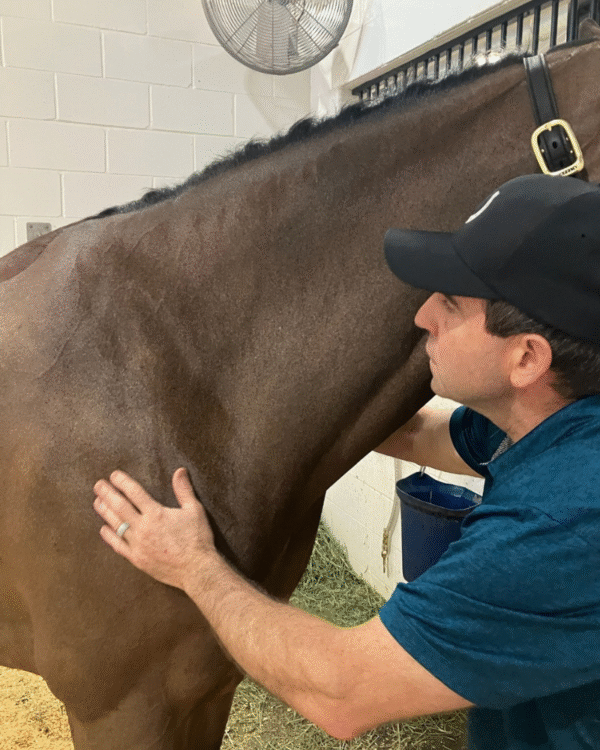This is a follow-up lameness exam.
PERFORMANCE EXAM
Symptoms may not always appear as obvious lameness, but rather as subtle performance issues like difficulty swapping leads, reluctance to move forward, toe-first landings, stumbling, abnormal head or tail carriage, stopping at jumps, muscle atrophy, or soreness. These cases require a thorough exam including palpation, hoof testers, flexion tests, brief neurological checks, and observing the horse jogging in hand, on a lunge line, and often under saddle. Very rarely is it just one area of the body creating the lameness so our goal is to address the entire horse
LAMENESS EXAM
True lameness appears as a noticeable change in gait, often due to arthritis, tendon or ligament injuries, muscle strain, fractures, or foot pain. The exam targets the affected leg and may use diagnostic nerve blocks if the cause is unclear on physical exam. We also evaluate whether other sore areas are contributing to the problem. Early diagnosis and treatment can speed up your horse’s recovery and return to performance.
PRE-PURCHASE EXAM
A pre-purchase exam can often avoid problems down the road for the buyer. Very rarely is a horse completely problem-free, and PPEs are not typically viewed as pass/fail. It’s a matter of finding the potential issues and determining if they can be managed for the horse’s intended use. A thorough musculoskeletal exam will include palpation, gait evaluation at the walk, trot, and canter on the lunge line, under saddle, or both. Any concerns may be further investigated through imaging or bloodwork.
Treatment may include injectio
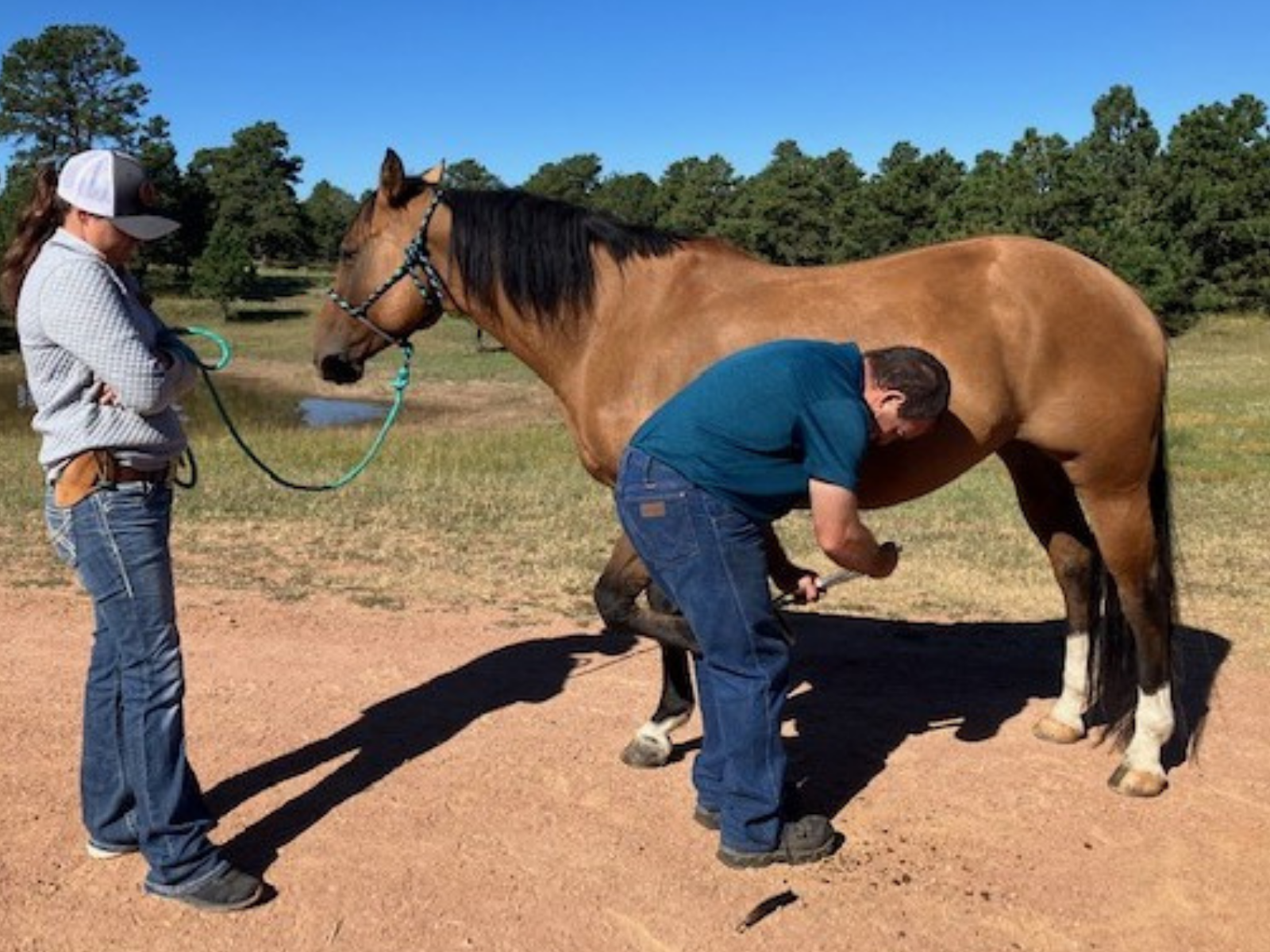
Hoof Tester Exam

Gait Analysis
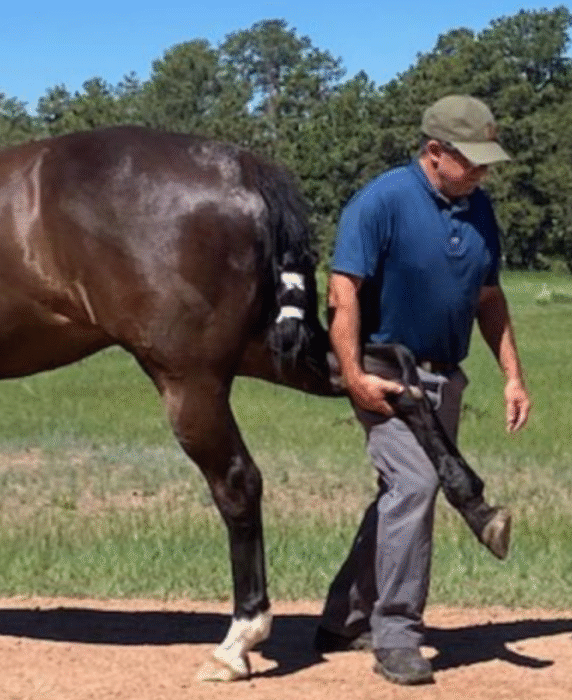
Hind Limb Flexion
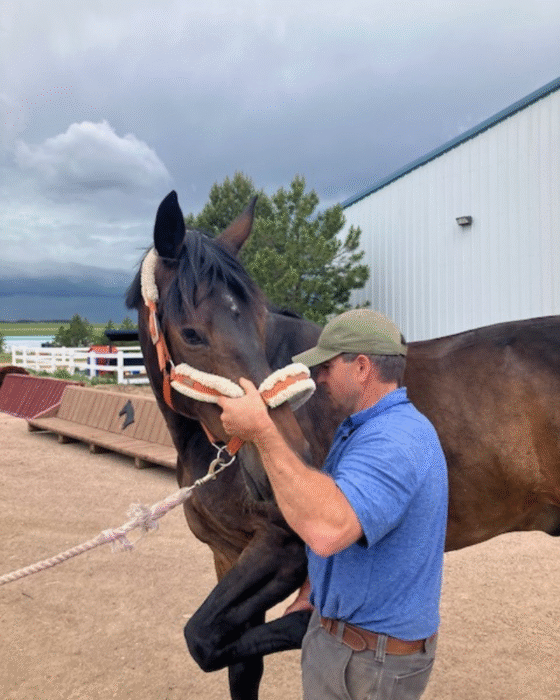
Neck Flexion
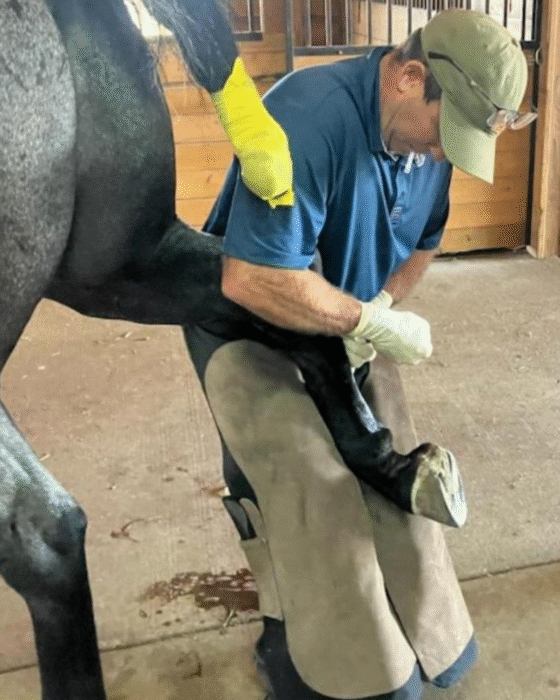
Hind Suspensory Block
